Saturday Evening Post, 1956/05/19
Saturday Evening Post
- The New Marilyn Monroe - Part 3

pays magazine: USA
paru le 19 mai 1956
article: 3ème partie "The New Marilyn Monroe"
en ligne sur saturdayeveningpost.com
Blonde, Incorporated
By Pete Martin
Originally published on May 19, 1956
The story of Marilyn’s brief marriage to Joe DiMaggio, her battle with Hollywood, and her surprising new career.

Milton Greene, vice-president of Marilyn Monroe Productions, playwright Terence
Rattigan, Sir Lawrence Olivier and Marilyn in New York. The occasion: To announce
plans for a movie version cf a Rattigan play, costarring Olivier and Monroe. (Hans Knopf, © SEPS)
I put this question to my friend and confidant, whom I call Flack Jones: “How did Joe DiMaggio happen to come into Marilyn’s life?” Jones is one of my principal sources of Marilyn Monroe information. As a skilled and articulate employee of the publicity department of the 20th Century-Fox motion-picture studio, he had worked closely with Marilyn for several years before her highly publicized departure from Hollywood to live in New York and “learn to be an actress.”
“Marilyn met him in a café one night on a blind double date,” Jones said. “DiMaggio had heard about her and wanted to meet her. They met through friends and had dinner. Everything went just fine and dandy, until ultimately their friendship ripened into a romance which led to their marriage.
“But to complicate things, late in 1952 she decided to mix her first holdout with her romance,” Flack Jones said. Then he corrected himself, “It must have been ’53, for she had made River of No Return and How to Marry a Millionaire. Anyhow, she decided — or else her confidential advisers had persuaded her — that she was worth more money. But instead of stalking into Darryl Zanuck’s office, slapping her next script down and saying, ‘I won’t do it!’ she simply hid out. She sneaked down alleys, didn’t answer her phone and couldn’t be reached by anybody.
“This was before she ran off and married Joe DiMaggio, and the studio was taking a firm tone with her — a very firm tone. But when the romance reached full flower, the studio had to do a fast switch,” Jones said. “Here we were, issuing communiqués about this ‘silly and stubborn girl who was ill-advised enough not to come back and take this important part’ in whatever the picture was — Pink Tights, I think — when all of a sudden she ups and marries Joe, the All-American Boy. After that, if we kept on beefing about her absence, the studio would be the big bully in the plot so far as the public was concerned.
“Then, to add to the studio’s confusion, the pair went off to Korea to entertain the troops. How are you going to snap a blacksnake whip at a girl’s calves for doing a thing like that? Snow White has married Prince Charming and they’ve gone off to Korea together to entertain the servicemen. So the studio started talking sweet in a hurry.
“However, the sharp-eyed and cynical could tell that that marriage was in danger as early as their arrival in the Orient,” Flack Jones went on. “The press interviewed Marilyn in Tokyo, and a story was radioed back which said that Marilyn had talked about this and about that, and — oh yes — there was a man in the far corner of the room whose name was Joe DiMaggio. It didn’t take much of a genius to figure that situation was the beginning of the end. Then, after an interval, the lovebirds flew back to Beverly Hills.”
“Did the studio start having its troubles making her report for work before she married DiMaggio or after she married him?” I asked.
“We were having trouble before,” Flack Jones told me.
“When was the first fly in the Monroe-Fox ointment?” I asked.
“I don’t know the exact time,” he said. “But it was not peculiar to Monroe alone. It’s peculiar to life in Hollywood. It almost invariably happens when money and success make an impact on a male or female ego. We expect it to set in when the fan mail of the party in question zooms up to over two thousand a week. It’s almost as much of a sure thing as the thermostat in your house turning on the heat. Two thousand fan letters a week is when we begin to say. ‘We’ll be having troubles with this doll.”
“What form does it usually take?” I asked. “‘I want more dough,’ or ‘I don’t like my contract.’ or ‘My script stinks’?”
“A better way to answer your question is to say that when they realize they’ve got weight to throw around, they start throwing it,” Flack Jones said. “They don’t do those things you mentioned right away; they do less serious things first. They complain about wardrobe, or, if it’s a musical, they complain about the songs or the dances, or, if it’s a plain comedy or a straight drama, they gripe about how a certain scene is being directed. Whatever’s handy, that’s what they complain about. It makes no sense, but it’s a means of saying that they have some weight now, and they want you to know it.”
“What’s the next move?” I asked.
Flack Jones rubbed his fingers over his scalp thoughtfully and said, “Ordinarily it’s a preliminary test of strength, like bracing the front office for more dough for your dramatic coach.
“When she found out that she had that much weight, she decided to go out for herself, and she did. Some people think that she has always been a naive, flibbertigibbet girl moving through life. This is utter nonsense. She wasn’t that way when she first was under contract; she was a grown person then. She kept her dates, she was always on time.”
From now on,” Jones said, “what I say is merely my own opinion, but I think that it was then that she discovered that there are people in Hollywood who respect other people who kick their teeth in. That’s not just Hollywood for you. Most people do.”
“Let’s cut to the split-up between Joe and Marilyn,” I said. “As I recall it, first there were rumors of strife, then things reached an impasse.”
“Joe and Marilyn had a rented house on Palm Drive, in Beverly Hills,” Jones said. “We had a unique situation there with the embattled ex-lovebirds both cooped in the same cage. Marilyn was living on the second floor and Joe was camping on the first floor. Then a famous attorney, Jerry Giesler, was brought into the act for Marilyn, although why they had to employ such a great lawyer to handle a simple divorce case I don’t know. The public was all worked up, the press was, too, and they’re circling the house like Indians loping around a wagon tram, waiting for somebody to poke a head out. The next move was Giesler’s announcement that came Wednesday, at eleven o’clock, Marilyn would hold a press conference in his office.
“In the Fox publicity department,” Jones said, “we concluded that if you call a press conference in a lawyer’s office, it presupposes an obligation to say something, and what could Snow White say when she was breaking up with Prince Charming, or Cinderella say when she was splitting from the All-American Boy? Any press conference would only bring more characters out to chase Marilyn from her house to Giesler’s office. And once they got there, if anybody issued one of those ‘They’re just a young couple who couldn’t make a go of it’ statements, it would only irritate everybody.
“So the studio issued a statement of its own in advance. We said that Marilyn wasn’t going to hold any press conference, but she’d be leaving for work at ten o’clock from her house, to fulfill her commitment on Seven Year Itch, based on the Broadway play of the same name and costarring Tom Ewell, in Cinemascope. Once we’d got in that plug, we said that while we didn’t promise an interview, the boys would get some pictures. So forty or fifty of the press congregated. In addition, there were several hundred volunteer reporters and photographers in the trees and trampling the lawn.
“Then an unbelievable thing happened,” Flack Jones said. He grinned when he thought of it. “They were all there to get a picture of Marilyn going to work, because it would be the first picture since her announcement that she wanted a divorce, and all at once, in front of the house a great, big, beautiful automobile pulled up. In it was a friend of Joe’s from San Francisco. As I’ve said, Joe’s been in that house for three days on the first floor, with Marilyn on the second. There was a back alley, and a rejected husband could have snuck out of that back alley and disappeared if he’d wanted to. But Joe faced up to his responsibilities and took them like a man. So what do the press and newsreels get? A bonus! Out of the front door comes Joe, grim-lipped, walking the last long mile, with his pal carrying his suitcase.
“The press stopped him on the lawn, but Joe had no comment to make. They got pictures of him as he climbed into the car slowly, and one guy asked, ‘Where you going, Joe?’
“‘I’m going home,’ Joe said.
“‘We thought this was your home, Joe,’ chirped the press like a Greek chorus.
“San Francisco has always been my home,’ Joe said. He stood there waving farewell, then he drove away.”
Looking at Flack Jones, I could see that he was still marveling at a scene which no press agent would have thought of inventing in his wildest dreams. He said, “I’ve always admired Joe for that. A lot of guys would have sneaked out the back way and gone to San Francisco, avoiding that encounter in the front yard. Not old Joe.
“About ten minutes later, Marilyn came down the stairs, sobbing, on Giesler’s arm. She was all broken up. Everybody was shoving and pushing. A lady columnist kicked the crime reporter for the Los Angeles Mirror in the shins. He turned on her and asked, ‘Who do you think you’re kicking?’ and she said, ‘I’ll kick you in the pants if you don’t get out of my way.’ All in all, there was quite a hubbub. The newsreel guys were grinding away, and somebody asked, ‘How about Joe, Marilyn?’ and Marilyn said, between sobs, ‘1 can’t talk! I can’t!’ And she got in a car and drove off.”
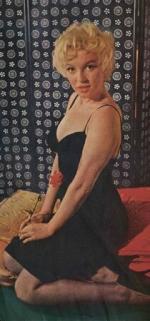 Later, when I talked to Marilyn in New York, I guided our conversation around to a story written by Aline Mosby, of the United Press. The story was about how Marilyn had told her that she had bought Joe a king-size, eight-foot bed because she didn’t approve of separate bedrooms. “People say it’s chic to have separate bedrooms,” Marilyn told me. “That way a man can have a place for his fishing equipment and guns as well as sleeping, and a woman can have a fluffy, ruffly place with rows and rows of perfume bottles. The way I feel, they ought to share the same bedroom. With a separate-bedroom deal, if you happen to think of something you want to say, it means you have to go traipsing down the hall, and you may be tired. For that matter, you may forget what you started out to say. Besides, separate bedrooms are lonely. I think that people need human warmth even when they’re asleep and unconscious.”
Later, when I talked to Marilyn in New York, I guided our conversation around to a story written by Aline Mosby, of the United Press. The story was about how Marilyn had told her that she had bought Joe a king-size, eight-foot bed because she didn’t approve of separate bedrooms. “People say it’s chic to have separate bedrooms,” Marilyn told me. “That way a man can have a place for his fishing equipment and guns as well as sleeping, and a woman can have a fluffy, ruffly place with rows and rows of perfume bottles. The way I feel, they ought to share the same bedroom. With a separate-bedroom deal, if you happen to think of something you want to say, it means you have to go traipsing down the hall, and you may be tired. For that matter, you may forget what you started out to say. Besides, separate bedrooms are lonely. I think that people need human warmth even when they’re asleep and unconscious.”
There were other things I wanted to ask her. “I’ve heard that in Asphalt Jungle you displayed a highly individual way of walking that called attention to you and made you stand out. I’ve heard a lot of people try to describe the way you walk, and some of those descriptions are pretty lurid. How do you describe it?”
She leaned forward, placed her elbows on a table and cupped her chin in her palms. She was very effective that way. “I’ve never deliberately done anything about the way I walk,” she said. “People say I walk all wiggly and wobbly, but I don’t know what they mean. I just walk. I’ve never wiggled deliberately in my life, but all my life I’ve had trouble with people who say I do. In high school the other girls asked me, ‘Why do you walk down the hall that way?’ I guess the boys must have been watching me and it made the other girls jealous or something, but I said, ‘I learned to walk when I was ten months old, and I’ve been walking this way ever since.’”
In California I had asked Flack Jones, “What would you say Marilyn does best? Is her walk her greatest asset?” Jones regarded the feathery top of a slender, swaying palm tree, as if searching for an answer. “She does two things beautifully,” he said. “She walks and she stands. Also, as I’ve already told you she has wit enough to buy her clothes one or two sizes too small, and with a chassis like hers, this infuriates women and intrigues guys. From a woman’s standpoint, there is no subtlety in such gowns. I remember when Marilyn came to a party. In a number which fitted her like a thin banana peel and the other women there thought it outrageous. Comments were made about that gown in a gossip column.”
“How did Marilyn react to that?” I asked.
“Marilyn asked me, ‘What should I have done?”’ Jones said. “I said, ‘Look, honey, the men loved it. Pay no attention to what the gossip-column cat said. You’re a man’s woman, so dress for men, not for other women. Any time you quit dressing for men you’re out of business.’”
I told Jones that I’d been trying to find a phrase which would describe her walk, but that I hadn’t been able to. “I can’t help you there,” Jones said. “I’ve heard the words ‘quivering’ and ‘trembling’ used in connection with her walk, but I don’t know a description that really does the job. But when she walks across a screen a couple or three times, she attracts attention — a whole lot. That much I know.
“The public laughed at her walk in Niagara,” Jones told me, “but Marilyn was only doing what the director wanted her to. It wasn’t up to her to cut the picture or to tell the director not to point the camera at her during a long walk across cobblestones. I challenge any girl to walkdown a cobblestoned street in high heels without wiggling at least once.”
After his analysis of Marilyn as a pedestrian, Flack Jones picked up our conversational threads where we’d broken them off with her parting from Joe DiMaggio, and tied them together again. “After that she came back and finished Seven Year Itch at Fox,” he said. “Her agent, Charlie Feldman, flung a snazzy party for her at Romanoff’s, and she went to New York. The next thing anybody knew, she announced that, with a New York photographer named Milton Greene, she had formed Marilyn Monroe, Inc. She’s the president of the corporation; Greene’s vice-president. But I have reason to think that she’d done that before she left Hollywood, for a hairdresser at the studio told me that one day when he had Marilyn in front of his mirror, she had said, ‘Gee, I feel good. I’m incorporated.’”
I put it to Jones, “When she left the studio that last time, was it a clean, sharp break or did her relations with the studio gradually become fuzzy and vague?”
“After Itch,” Flack Jones said, “she simply didn’t show up again. I don’t know whether you’d call that sharp or vague.”
I said, when I finally met Marilyn, “The way I get it, you invented a whole new system of holding out; you just disappeared.”
“I disappeared because if people won’t listen to you, there’s no point in talking to people,” Marilyn told me. “You’re just banging your head against a wall. If you can’t do what they want you to do, the thing is to leave. I never got a chance to learn anything in Hollywood. They worked me too fast. They rushed me from one picture into another.
“I know who started all of those stories which were sent out about me after I left Hollywood the last time,” she added. One paper had an editorial about me. It said: ‘Marilyn Monroe is a very stupid girl to give up all the wonderful things the movie industry has done for her and go to New York to learn how to act.’ Those weren’t the exact words, but that was the idea. That editorial was supposed to scare me, but it didn’t, and when I read it and I realized that it wasn’t frightening me, I felt strong. That’s why I know I’m stronger than I was.”
She thought for a while; then she said, “I’m for the individual as opposed to the corporation. The way it is, the individual is the underdog, and with all the things a corporation has going for them an individual comes out banged on her head. The artist is nothing. It’s tragic.”
Going back to a straight question-and-answer routine, I said, “You’re habitually late for appointments. What are the psychological reasons for your lateness?’
“I don’t know,” she said. “I’ve never come to any conclusion. If I knew, I’d get over it.”
I said that I’d heard she was so nervous before appointments that she was sometimes became nauseated. I asked if this was caused by a feeling of pressure — of people pushing and hauling and pulling at her.
“You’d throw up, too, in some situations,” she told me. “I flew into New York at eight o’clock one morning and there were photographers waiting to take pictures of me at the airport, and all that morning I had a series of interviews with newspaper people. Those interviews came twenty minutes or a half hour apart. Then I was rushed to a luncheon with a group of magazine people, and right after luncheon I tore over to the Daily News Building. I don’t think anybody can take that routine very long. Another complication is that I have a certain stupid sincerity. I don’t want to tell everybody who interviews me the same thing. I want them all to have something new, different, exclusive. When I worry about that, I start to get sick at my stomach.”
I asked her if writers had ever prepared material for her to use in an “interview” or in a “by-line story.”
“I refuse to let articles appear in movie magazines signed ‘By Marilyn Monroe,” she said. “I might never see that article and it might be O.K.’d by somebody in the studio. This is wrong, because when I was a little girl I read signed stories in fan magazines and I believed every word of them. Then I tried to model my life after the lives of the stars I read about. If I’m going to have that kind of influence, I want to be sure it’s because of something I’ve actually said or written.”
“I’ve been told that you devote hours to selecting and editing pinup pictures of yourself,” I said.
“I haven’t so far,” she told me. “But maybe it’s time I did. At least I’d like to have my pictures not look any worse than I do. I’d like them to resemble me a little bit. With some photographers, all they ask is that a picture doesn’t look blurred, as if you’ve moved while they were taking it. If it’s not blurry they print it.”
“Somewhere,” I said, “I’ve read that at least half of the photographs taken of you are killed because they are too revealing.”
“That’s the Johnston Office for you,” she sighed. “They’re very small about stuff like that, and what the Johnston Office passes, the studio ruins with retouching. After one sitting of thirty poses, twenty-eight of those poses were killed. The Johnston Office spends a lot of time worrying about whether a girl has cleavage or not. They ought to worry if she doesn’t have any. That really would make people emotionally disturbed. I don’t know what their reasoning is,” she went on with a puzzled air. “They certainly can’t expect girls to look like boys.”
“I’ve read that your measurements are 37-23-34,” I told her.
“If you’re talking about my lower hips, they’re thirty-seven inches,” she said. “If you’re talking about my upper hips, they’re thirty-four.” Eying her, I tried to decide where “upper” hip left off and “lower” began. I gave up.
“Nowadays,” she said, “there’s a vogue for women with twenty-twenty-twenty figures. Models in the high-style magazines stick out their hipbones and nothing else. But I’m a woman, and the longer I am one the more I enjoy it. And since I have to be a woman, I’m glad I’m me. I’ve been asked, ‘Do you mind living in a man’s world?’ I answer, ‘Not as long as I can be a woman in it.’”
“There’s another thing I want to ask you,” I said. “It’s about something you said to a man in the Fox Studio legal department. You said, ‘I don’t care about money. I just want to be wonderful.’ He didn’t know what you meant by that.”
“I meant that I want to be a real actress instead of a superficial one,” Marilyn herself told me. “For the first time I’m learning to use myself fully as an actress. I want to add something to what I had before. I want to be in the kind of pictures where I can develop, not just wear tights. Some people thought that they were getting their money’s worth when they saw me in The Seven Year Itch, but in future I want people to get even more for their money when they see me. Only today a taxi driver said to me, ‘Why did they ever put you in that little stinker, River of No Return?’
“I thought it was a good question,” Marilyn told me. “I’m with that taxi driver. He’s my boy. Knowing what I know now, I wouldn’t accept River of No Return today. I think that I deserve a better deal than a Z cowboy movie, in which the acting finishes third to the scenery and CinemaScope. The studio was CinemaScope-conscious then, and that meant that it pushed the scenery instead of actors and actresses.” Without missing a beat, she switched gears into another subject. “One of the things about leaving Hollywood and coming to New York and attending the Actors’ Studio was that I felt that I could be more myself,” she said. “After all, if I can’t be myself, who can I be?” I shook my head. She had me puzzled too.
Nunnally Johnson had directed How to Marry a Millionaire, costarring Betty Grable, Lauren Bacall and Marilyn. “Do her pictures make a lot of money?” I asked him in Hollywood.
“Millionaire earned a tremendous amount,” Nunnally told me.
“What about The Seven Year Itch?” I asked.
“Variety reports it as the top Fox grosser for 1955,” he said. “But speaking for myself, I can’t say that I saw the ‘new Marilyn Monroe’ in The Seven Year Itch that some others did. I thought that essentially it was the same performance, just longer. Still, this could scarcely be a cause for worry for her; God had given her that equipment and it was still magnificent. She was still a phenomenon.”
“Maybe she’ll grow into a young Mae West and make people laugh at sex,” I suggested.
Johnson agreed that it might be a good thing if she could do that. “I believe that the first time anybody genuinely liked Marilyn for herself, in a picture, was in How to Marry a Millionaire,” he said. “She herself diagnosed the reason for that very shrewdly, I think. She said that this was the only picture she’d been in in which she had a measure of modesty. Not physical modesty, but modesty about her own attractiveness. In Millionaire she was nearsighted; she didn’t think men would look at her twice, because she wore glasses; she blundered into walls and stumbled into things and she was most disarming. In the course of the plot she married an astigmatic; so there they were, a couple of astigmatic lovers. In her other pictures they’ve cast her as a somewhat arrogant sex trap, but when Millionaire was released, I heard people say, ‘Why, I really liked her!’ in surprised tones.”
These comments of Johnson’s were made before Marilyn was enlightened by exposure to the Actors’ Studio. Upon her return from New York to work at Fox in Bus Stop, Johnson did see a “new Marilyn Monroe.”
“In contrast to the old Marilyn, in her present incarnation she is a liberated soul, happy, co-operative, friendly, relaxed,” he wrote me. “Actually, it is as if she had undergone a psychoanalysis so successful that the analyst himself was flabbergasted. Now she’s different; her behavior and her manner as a member of the social order are O.K. As for her acting, that remains to be seen.”
I told Marilyn that I had read an Associated Press story which estimated that her newest contract — scheduled to run for seven years — would bring her more than $8,000,000. When I mentioned this, she said, “Eight million dollars is a lot. However, no matter what they tell you, it’s not for money alone that I’m going back to Hollywood. I am free to make as many pictures for my own company as I do for Fox, and I can do TV and stage shows.”
Among others I’d talked to about Marilyn, before discussing her with herself, was Milton H. Greene, the New York photographer who’d become vice president of Marilyn Monroe Productions.
“I don’t know where they got that figure eight million, either,” Greene had told me. “Not from me or Marilyn.” He went on, “I don’t ask you what you make, do I? Everybody wants an exclusive release or an exclusive interview with Marilyn on the subject, and I want everybody to be happy, but things like that are confidential.”
Like Marilyn, Greene asked me not to use a tape-recording machine when interviewing him. “Makes me stutter,” he said. So, carefully, laboriously, and word for word, I wrote down everything he said to me. While doing it, I noticed no signs of stuttering. Evidently a notebook and pencils didn’t bother him. Greene had also asked me to put the initial “H” in his name, making it Milton H. Greene. “Would you mind very much?” he said. “There’re other Milton Greenes who are also in the photography business.”
He had met Marilyn when he had gone to California to do a series of photographs of Grace Kelly, Elizabeth Taylor, Jean Simmons and Marilyn Monroe. It hadn’t been his idea to do anything too sexy. “After all,” he said, “in a national magazine you can only expose so much of a girl, even if the girl is willing. Marilyn turned out to be different from what I thought she’d be. More sensitive.”
Greene had gone to California on a second assignment, and had begun to think of doing a book of photographs of Marilyn. “The book isn’t out yet,” he said, “but I’ll show you a few of the pictures I made for it. It will be Marilyn in different moods and settings, as if she were playing different parts.” He went to a shelf and brought back a box of aluminum squares. Each square contained a color transparency. “Here’s one where she looks as if she’s in England,” he said. “As you can see, she’s wearing an Edwardian hat. Here’s one where she looks like Bernadette in The Song of Bernadette.” I looked at that one for a long time. It was, I thought, a novel idea.
Milton H. Greene watched me write down what he’d said in my notebook; then he went off on a slight tangent. “One day I plan to do a cookbook for dogs,” he said. “It would contain dog-dish recipes. I think it would be amusing.” I brought him back from his dog cookbook project to his association with Marilyn. “In Hollywood,” he said, “we got to talking. This was after she’d made Seven Year Itch and after her divorce from Joe, and I told her that I hoped to go into television and theatrical production. I found that all Marilyn wants is to make just enough money to be able to afford to make good pictures. That’s the way I feel about it, too, so Marilyn Monroe Productions hopes to buy a good story property; then approach the right studio about making and distributing the picture.”
He stood up, walked around his office and came back to his chair. “If Marilyn had been only interested in making money,” he said, “she wouldn’t have been interested in me.”
When I asked Marilyn to tell me about her association with the Actors’ Studio, she said that she not only attended classes there, but had also had private lessons from Lee Strasberg and his wife, who are the mainsprings of the project.
Greene told me, “Marlon Brando, Jimmy Dean, Kim Stanley, Julie Harris and Montgomery Clift all studied under the Strasbergs. Marilyn observes, studies and watches. She listens to lectures. Occasionally she is allowed to take part.”
The Actors’ Studio lets interested people like Marilyn sit in on an informal, guest basis. She is not an officially enrolled student member of the Actors’ Studio, because you are not admitted there on that basis unless you have contributed something notable on the stage in a performance or have passed a series of exacting auditions. Just wanting to be in isn’t enough. This is very smart of the Strasbergs, because it eliminates all those who are without talent; otherwise the studio would be full of women all seven feet tall and all trying to be actresses.
I said to Marilyn that I’d heard she’d spent some time with Terence Rattigan, the British playwright, discussing the screenplay he was adapting for her from his London stage success, The Sleeping Prince, a vehicle in which Sir Laurence Olivier had played the prince. Sir Laurence had also agreed to play the same role opposite Marilyn and also to direct the film. “I had a bad cold the evening I spent with Mr. Rattigan, and he said I sounded like Tallulah Bankhead,” Marilyn told me proudly. Then she added thoughtfully, “Mr. Rattigan is young, but not too young.”
I asked her what she meant. She smiled and said, “I guess you want me to say over twelve and not quite ninety. I don’t know how old Mr. Rattigan is. I’d say he’s kind of ageless.”
I asked her to give me a hint of the story line followed by The Sleeping Prince. “I’m an American chorus girl in London, in it,” she said, “and the regent of a foreign country notices me and asks me to a reception at his country’s legation. I wriggle into my only formal and go, only it turns out it’s not a large gathering at all. In fact, it’s the same stale bit that’s been tried out on girls for the last three thousand years: dinner for two, candles, wine and soft music, when she’s expecting other guests. The next thing I know, I’ve had too much champagne and I’ve passed out. I won’t tell you any more. You ought to be willing to spend money to find out what happens next.
“The truth is,” she said, “the plot is about a man who’s been asleep — at least his emotional something or other has been asleep — but little by little a relationship builds up between him and this American chorus girl, and he begins to stir in his sleep, as you might say. He’s a married man, but that doesn’t complicate things because he’s sophisticated about the whole deal. Terence Rattigan describes it as ‘an occasional fairy tale or a comedy with serious overtones.’”
Weeks before, when I’d talked to Billy Wilder about Marilyn, I’d said to him, “I should think it would take a great deal of mature mental and moral strength to cope with becoming an enormous success overnight. It must be unsettling to suddenly become a sex symbol known all over the world.”
Wilder replied, “It’s my opinion that she’s basically a good girl, but what’s happened to her is enough to drive almost anybody slightly daffy, even someone who is armored with poise and calmness by his background and bringing up. You take a girl like Marilyn, who’s never really had a chance to learn, who’s never really had a chance to live, and suddenly confront her with a Frankenstein’s monster of herself built of fame and publicity and notoriety, and naturally she’s a little mixed up and made giddy by it all. However, I’d like to go on record with this: I worked with her in Seven Year Itch and I had a good time with her. She was seldom on time, but it wasn’t because she overslept. It was because she had to force herself to come to the studio. She’s emotionally upset all the time; she’s scared and unsure of herself — so much so that when I worked with her I found myself wishing that I were a psychoanalyst and she were my patient. It might be that I couldn’t have helped her, but she would have looked lovely on a couch.”
“You mean you didn’t get annoyed when she was late?” I asked.
“I understood the reasons for it,” Wilder told me. “There was no use getting annoyed. Even at the beginning, when I discovered that I had let myself in for a certain amount of trouble, I found myself liking her. At no time did I find her malicious, mean, capricious or anything but conscientious. There are certain urges and drives in her which make her different, but, as a director, I think it worth combating those things and living with them in order to work with her.”
I found myself hoping that Josh Logan, who will direct her in her next picture, the filmed version of Bus Stop, and Buddy Adler, the producer who bought that play for Fox, would feel the same way about her Wilder feels. That’s what she does to you. In spite of her spells of procrastination carried to fantastic lengths, in spite of her verbal convolutions, you wind up liking her.
By “her” I mean, of course, all of the various Marilyn Monroes — and there are several of them. There is the sexpot Marilyn Monroe; she’s the one who tries so hard to live up to the legend of her sexiness that even her own stomach sometimes can’t take it. Then there’s the frightened Marilyn Monroe, product of a broken home and a battered childhood — a girl named Mortenson who still can’t believe that she’s that girl on the screen they’re making all the fuss about. And last of all there is “The New Marilyn Monroe” — the one who is supposed to have emerged from the Actors’ Studio as a composed and studied performer, “having achieved growth” and “developed more.”
Somehow, as I neared the end of my interview, I found myself wondering if people would accept her as the new and different Marilyn Monroe she thinks she is. I had heard one man say, “Even if you hung Ethel Barrymore’s and Helen Hayes’ talent on Marilyn’s beautiful body, people wouldn’t take her acting seriously.”
To my surprise, I realized that I was dreading the possibility that when she turned on her new brand of acting, audiences might laugh at her, as they laughed at Zasu Pitts when she went in for “heavy drahma” after a lifetime as a comedienne.
“It doesn’t scare me,” Marilyn told me bravely, when I mentioned my fears. “If I have the same things I had before I started to go to the Actors’ Studio and I’ve added more — well, how can I lose?”
Whether she has really “added more” or not, I don’t know. But, as she herself points out, she does — emphatically — still have the same things she had before. My guess is that they’re still negotiable at the box office.
© All images are copyright and protected by their respective owners, assignees or others.
copyright text by Saturday Evening Post.

/image%2F1211268%2F20240315%2Fob_782fd3_banner-mm-2024-03-spring-5.jpg)
/image%2F1211268%2F20240410%2Fob_40c4f9_blog-gif-mm-niagara-1-3.gif)
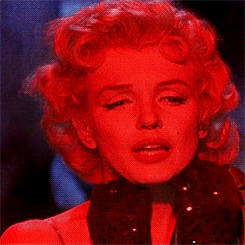
/image%2F1211268%2F20240417%2Fob_0b0d56_2024-03-lee-mexique.jpg)
/https%3A%2F%2Fstorage.canalblog.com%2F19%2F65%2F312561%2F91436129_o.jpg)
/https%3A%2F%2Fstorage.canalblog.com%2F57%2F63%2F312561%2F127743382_o.jpg)
/https%3A%2F%2Fstorage.canalblog.com%2F98%2F05%2F312561%2F84823731_o.jpg)
/https%3A%2F%2Fstorage.canalblog.com%2F01%2F63%2F312561%2F84814201_o.jpg)
/https%3A%2F%2Fstorage.canalblog.com%2F66%2F21%2F312561%2F82823948_o.jpg)
/https%3A%2F%2Fstorage.canalblog.com%2F32%2F31%2F312561%2F124125043_o.jpg)
/https%3A%2F%2Fstorage.canalblog.com%2F31%2F08%2F312561%2F71448014_o.jpg)
/https%3A%2F%2Fstorage.canalblog.com%2F34%2F90%2F312561%2F81829009_o.jpg)
/https%3A%2F%2Fstorage.canalblog.com%2F18%2F35%2F312561%2F61120383_o.jpg)
/image%2F1211268%2F20240410%2Fob_9f471d_blog-gif-mm-syi-1.gif)


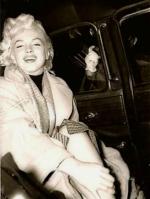




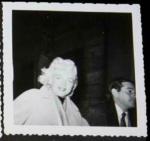
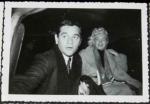

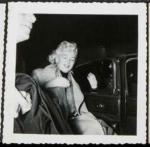



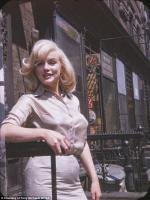
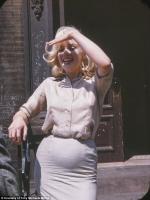
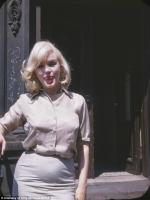



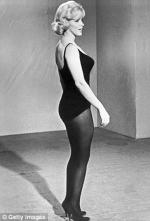







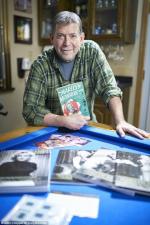


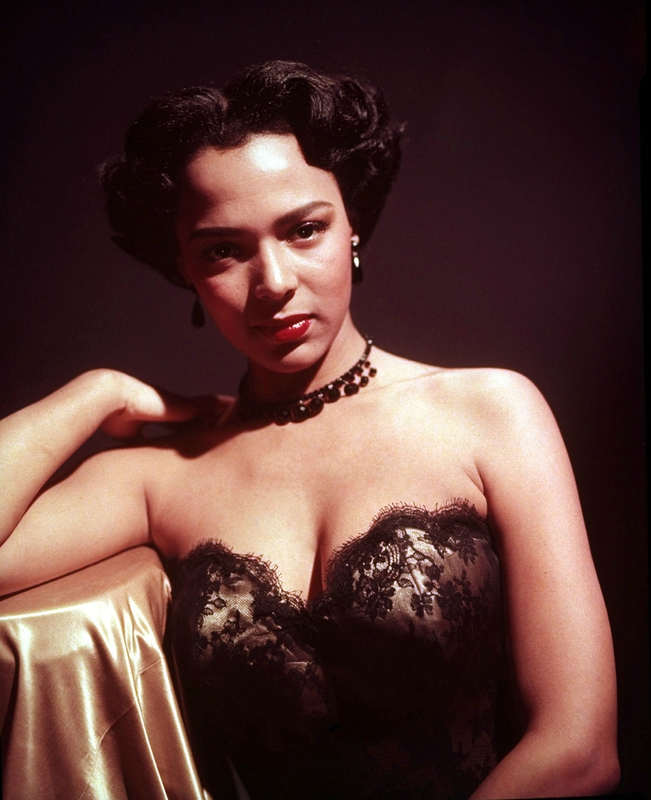







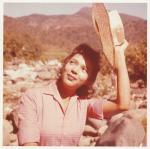





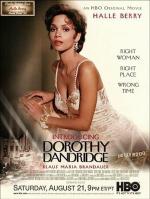




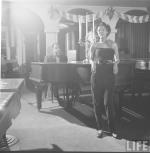
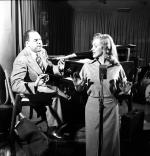





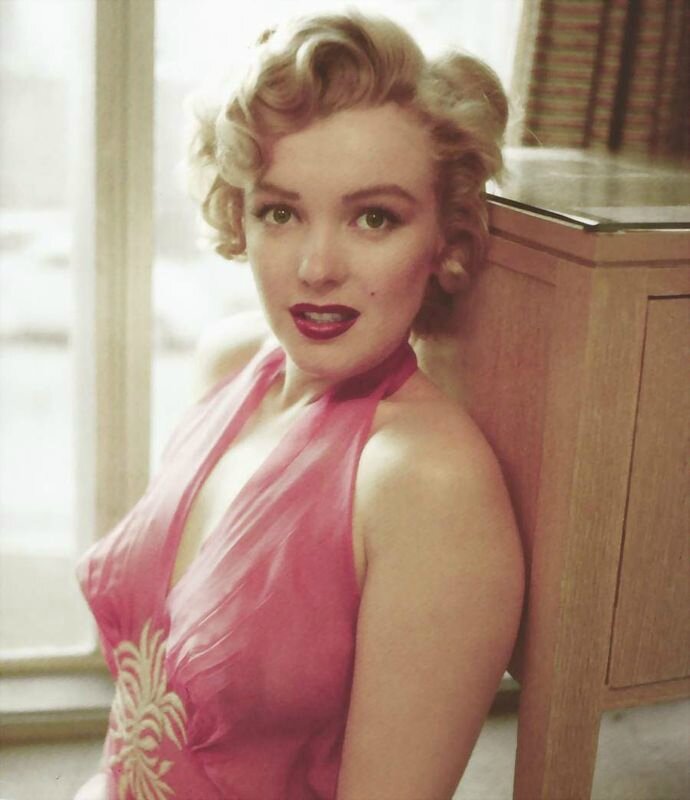


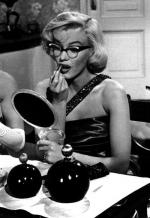

















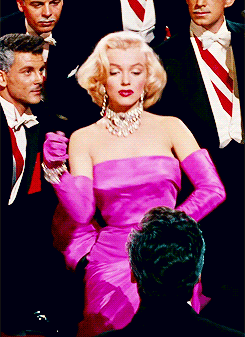
/image%2F1211268%2F20240229%2Fob_66f2c6_tag-mm-public-martin-lewis-show-1.png)
/image%2F1211268%2F20240410%2Fob_07cb4a_blog-gif-mm-stern-1.gif)
/image%2F1211268%2F20240229%2Fob_143453_blog-gif-video.gif)
/image%2F1211268%2F20240301%2Fob_735dec_blog-liens-culture.jpg)

/image%2F1211268%2F20240302%2Fob_e11252_blog-liens-friends-jane.gif)